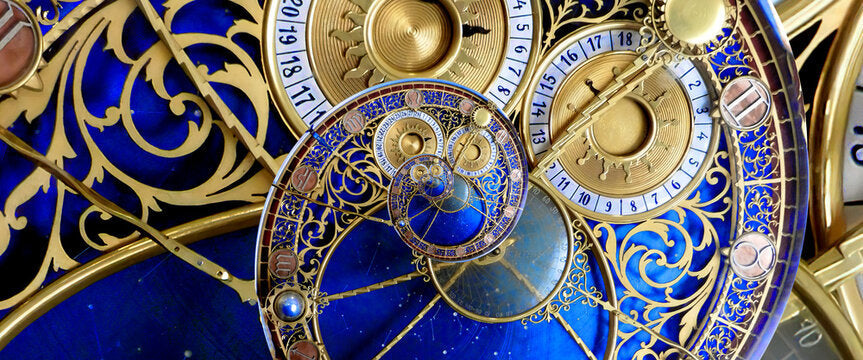Hello.
This is Oda from The Clock Works.
Today, let me introduce you to a slightly mysterious and romantic "old tale."
Have you ever heard of the " Antikythera Mechanism "?
This is an astonishingly sophisticated "machine" that is said to have been made in ancient Greece over 2,000 years ago .
It was discovered by chance in 1901 in the wreckage of an ancient ship near the island of Antikythera in the Aegean Sea.
What looked like a lump of rusty metal was actually...
It was an "astronomical calculator" with a complex structure made up of dozens of gears, and was capable of predicting the movements of the sun and moon, solar eclipses, and even the Olympic period.

*Image taken from the National Astronomical Observatory website.
At first, this object looked like just a lump of rusty metal.
However, as analysis progressed, it became clear that it contained a complex combination of gears , a mechanism that reproduced the phases of the moon , and even the ability to predict solar eclipses and the movement of the planets .

*Image taken from Wikipedia.
This is a drawing of the internal structure reconstructed from the Antikythera mechanism.
As you can see, it has a structure where multiple gears are cleverly combined .
Its precision is said to be "extremely advanced" even from the perspective of modern mechanical engineering.
In fact, it is said that no other technologically complex artifacts of this level would appear in history for another 1,000 years .
So who built this machine and for what purpose?
Or did you have someone make it?
Just imagining it makes you excited, doesn't it?
Research is still ongoing, but experts have yet to reach a conclusion .
However, Wikipedia has an interesting description:
The machine had a "door-like panel" attached to it, which apparently had an explanatory text of over 2,000 characters engraved on it.
This explanation is called the " instruction manual " among the research team,
The inclusion of this note suggests that the machine was intended for use by the general public, not by specialists .
In other words, this is an astronomical clock designed so that even people who are not familiar with machines can use it.
It may have been a portable, custom-made astronomical gadget for ancient people .
Think about it.
Long ago, the movements of the stars were read, calculated, designed, processed and assembled.
The fact that there were people with such knowledge and skills.
It's no wonder that this is called an "out-of-place artifact" (a highly technologically advanced product that is out of date).
How did they use this machine?
What kind of conversations did they have, and what were their thoughts as they lived while gazing up at the starry sky?
Perhaps they were living everyday lives not so different from ours.
We talked about the weather and travel, and marveled at the changing seasons.
Time passed, and 2000 years later.
In the same way, mechanical engineering technology, which "reads time and gives form to the rhythm of the universe,"
It came to fruition in modern-day Germany.
This is the flagship model of watch manufacturer **Hermle**.
**Tellurium**.
This clock can truly be called a **modern Antikythera Mechanism**.
It is not only a beautiful piece of interior decor, but also a microcosm that recreates the movement of celestial bodies .
If you are interested, please take a look at its structure and movement.


🛒 Purchase here


0 comments